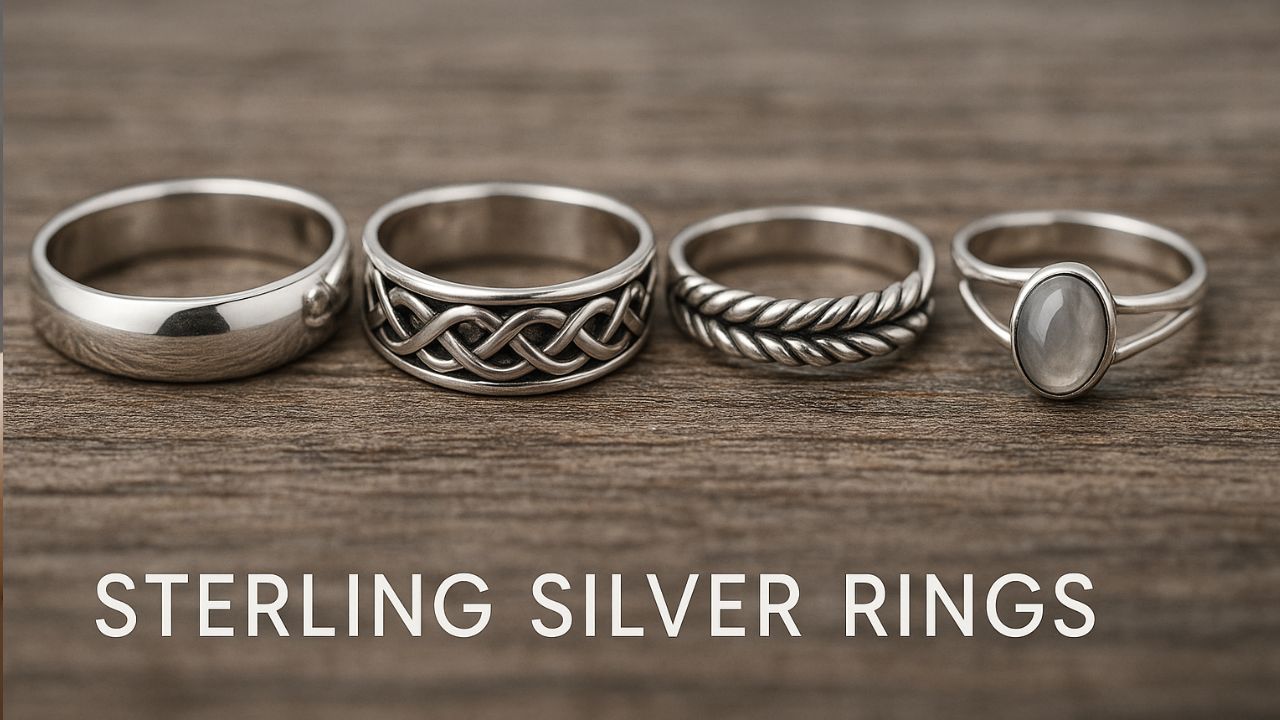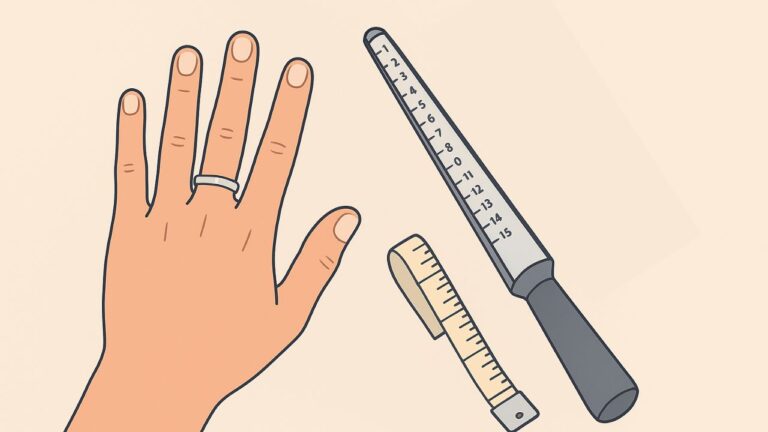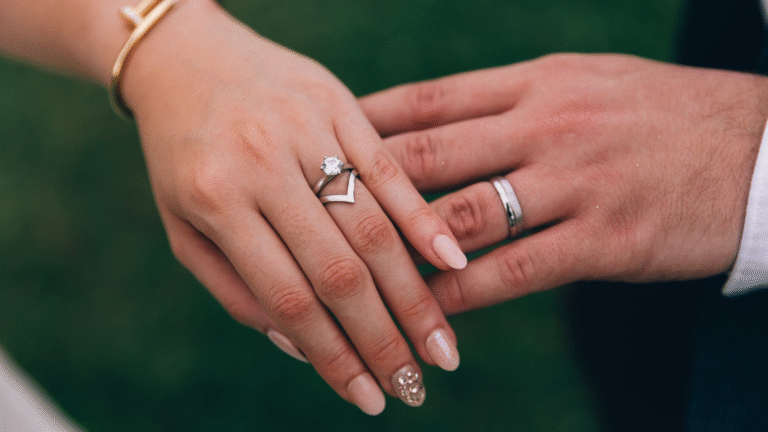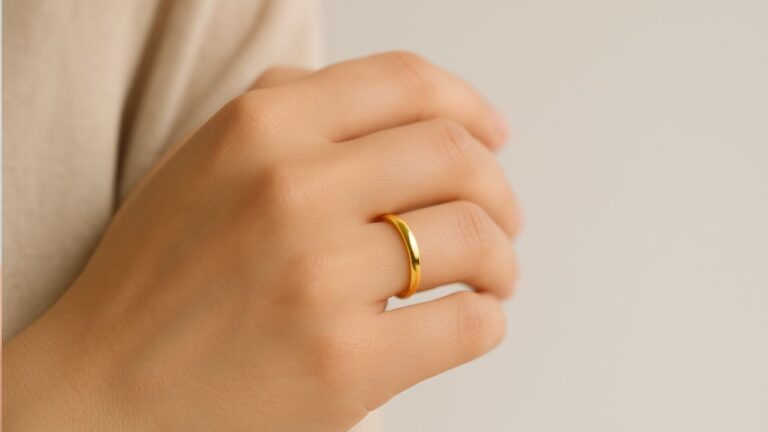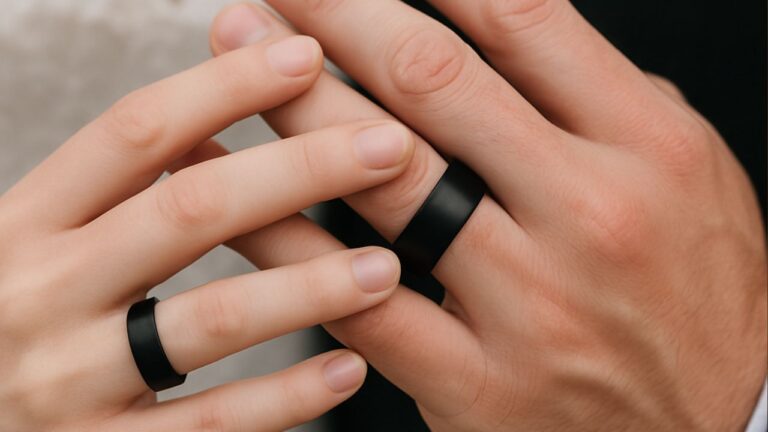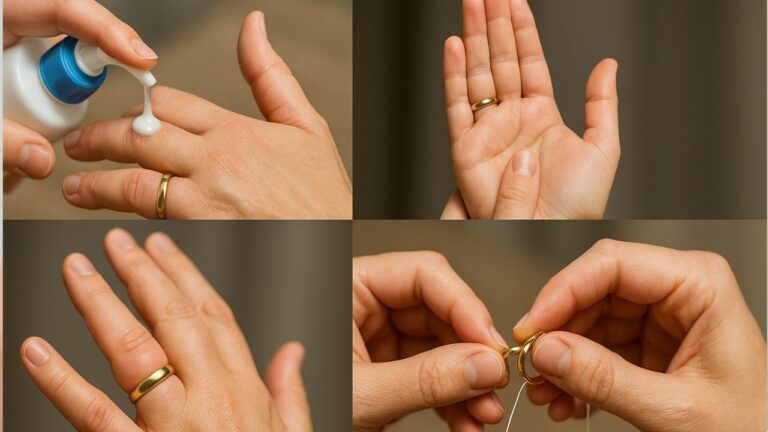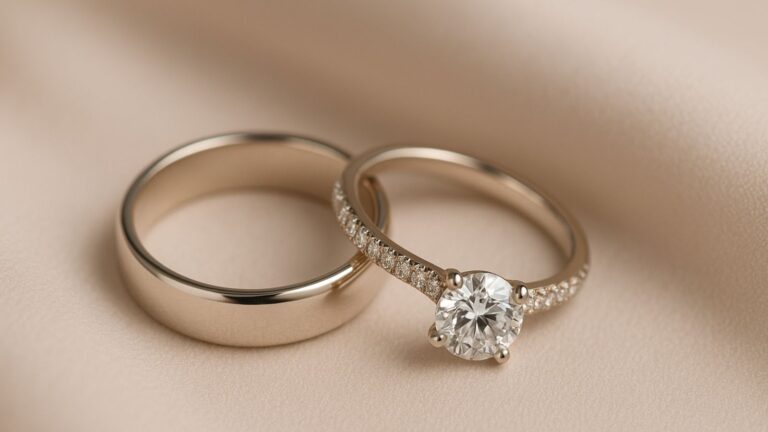Can Sterling Silver Rings Be Resized? A Complete Guide
Sterling silver is a metal alloy made up of 92.5% pure silver and 7.5% other metals, usually copper. This combination enhances the metal’s strength and durability while preserving the bright, shiny appearance of pure silver. Since pure silver is too soft for everyday use, adding other metals makes it more practical for crafting long-lasting jewelry. The “925” stamp commonly found on sterling silver rings refers to this 92.5% silver content.
Can Sterling Silver Rings Be Resized?
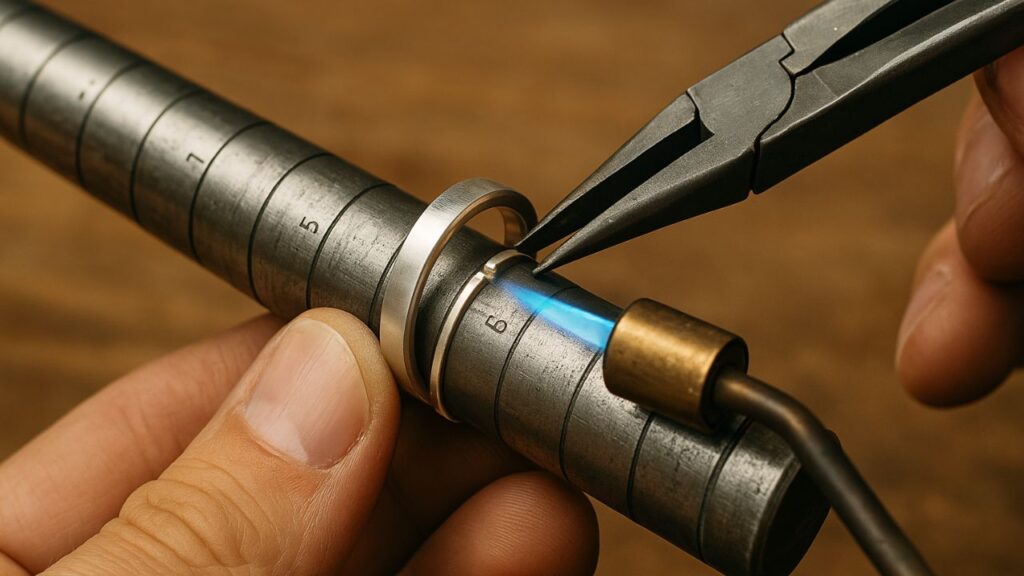
Yes, sterling silver rings can be resized, but there are a few important things to know first. Sterling silver is a soft metal compared to gold or platinum, which makes it easier to work with for resizing. A skilled jeweler can usually make a sterling silver ring either larger or smaller, depending on your needs. To make it bigger, they might stretch the band slightly or add extra silver to the ring. To make it smaller, they’ll usually cut out a small section of the band and then solder it back together. The key is to make sure you’re working with an experienced jeweler who knows how to handle silver properly, because if it’s not done right, the ring can become weak or lose its shape.
However, not all sterling silver rings are easy to resize. For example, if the ring has intricate designs, inlaid stones, or is part of a set (like a spinner ring), resizing might be more difficult or risky. Also, if the ring is plated with another metal like rhodium, it may need to be re-plated after resizing to maintain its appearance. Another thing to keep in mind is that resizing can sometimes leave a faint line where the ring was cut and soldered, though a good jeweler will usually polish this out. So, while resizing a sterling silver ring is totally possible, it’s a good idea to ask for a consultation first to see what’s best for your specific ring.
Can 925 Sterling Silver Rings Be Resized?
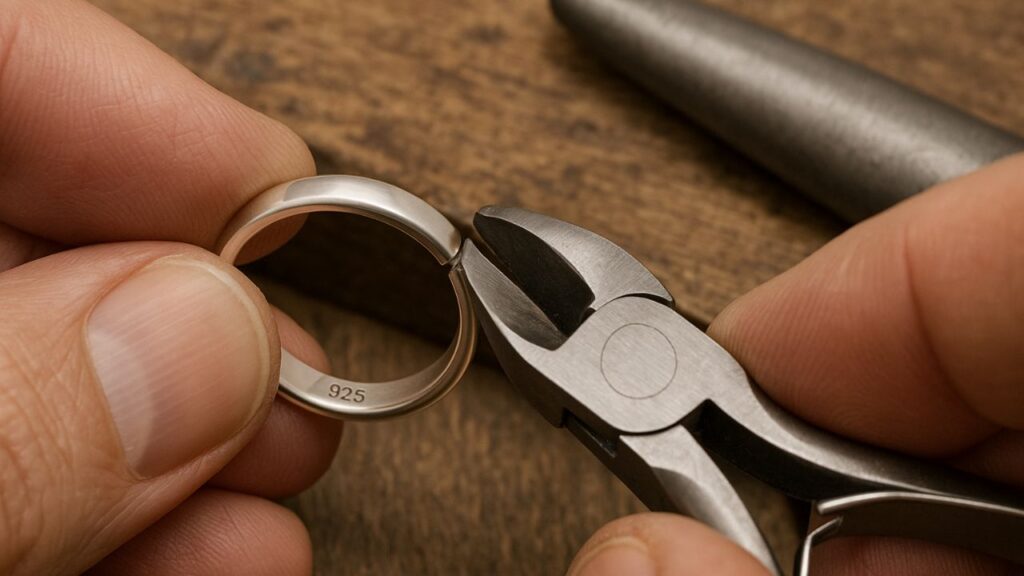
Yes, 925 sterling silver rings can be resized. The number 925 means the ring is made of 92.5% pure silver and 7.5% other metals, usually copper. This mix makes the ring strong enough to wear every day but soft enough for a jeweler to work with. If your ring is too tight or too loose, a jeweler can make it bigger or smaller. To make it bigger, they might stretch the ring a little or add more silver. To make it smaller, they can cut a small piece out and join the ends back together. Resizing a 925 ring is usually simple if done by someone who knows how to work with silver.
Still, not all 925 rings are easy to resize. If your ring has small stones, detailed designs, or a special coating like rhodium, resizing might be harder. Sometimes, after resizing, the ring needs extra polishing or coating to look new again. There might also be a small line where the ring was cut and fixed, but a good jeweler can make it nearly invisible. So yes, 925 sterling silver rings can be resized, but it’s best to take your ring to a skilled jeweler who understands silver jewelry.
Resizability of Different Silver Rings
| Type of Silver Ring | Can Be Resized? | Resizing Difficulty | Details | Special Considerations |
| 925 Sterling Silver | Yes | Easy to Moderate | Most common silver (92.5% silver, 7.5% copper). Strong and suitable for daily wear. | May need polishing or rhodium re-coating if plated. Design details can affect difficulty. |
| Fine Silver (99.9%) | Yes (not ideal) | High | Very soft and pure silver. Not common for rings. | Easily bends or distorts. Resizing may weaken the ring. |
| Argentium Silver | Yes | Moderate | Tarnish-resistant silver alloy with germanium. Stronger than sterling silver. | Requires a jeweler familiar with Argentium’s melting point. |
| Silver-Plated (over base metal) | No | Not Possible | Base metal (e.g., copper or brass) with thin silver coating. | Resizing removes silver layer and exposes base metal. |
| Coin Silver (90%) | Yes | Moderate | Older alloy used historically in the US. Less common now. | Can be brittle. Antique pieces need careful handling. |
| Nickel Silver (German Silver) | No | Not Possible | Made from nickel, copper, and zinc — contains no real silver. | Cannot be resized. May cause skin irritation. |
| Karen Hill Tribe / Thai Silver | Sometimes | Difficult | High-purity silver (95–99%) handmade in Thailand. Soft and often has detailed patterns. | Handmade designs may get damaged or distorted during resizing. |
| Rhodium-Plated Sterling Silver | Yes (with care) | Moderate | Sterling silver ring coated with rhodium for shine and protection. | Needs re-plating after resizing to restore finish. |
How Much Does Resizing a Sterling Silver Ring Cost?
The cost of resizing a sterling silver ring depends on several factors:
| Factor | Description |
| Type of Resize | Making a ring smaller usually costs less than enlarging it. |
| Amount of Work | Complex designs or thicker bands may require more time. |
| Materials Used | Adding sterling silver increases the price. |
| Location | Prices vary depending on the jeweler and country. |
Average Cost Estimate:
- To make smaller: $20 – $40
- To make larger: $30 – $60 (more if adding silver)
Prices may be higher if the ring includes stones or has an intricate design.
What Types of Sterling Silver Rings Cannot Be Resized?

While most sterling silver rings can be resized, some types are either very difficult or not possible to adjust due to their design, structure, or materials used. Here are the main types of sterling silver rings that usually cannot be resized:
1. Silver-Plated Sterling Silver Rings
Silver-plated sterling silver rings have a thin coating of another metal, often rhodium or pure silver, applied over the sterling silver base. While the inner metal is sterling silver, the outer plating is very delicate. When a jeweler attempts to resize the ring by cutting or heating it, the plating can peel, crack, or discolor. This not only affects the ring’s appearance but also makes it feel uneven or rough. Re-plating is sometimes possible, but it adds extra cost and doesn’t always restore the original smooth finish. For these reasons, resizing silver-plated rings is usually avoided.
2. Full Eternity Band Sterling Silver Rings
Full eternity bands are designed with stones set all the way around the band, leaving no bare metal. While they’re beautiful and elegant, they’re also nearly impossible to resize. Resizing would require either cutting through the row of stones, risking stone damage and uneven spacing, or completely remaking the ring. The structural integrity of the ring is also compromised when trying to alter such a tightly packed design. Because there’s no area to safely cut or expand, jewelers often recommend replacing the ring rather than resizing it.
3. Sterling Silver Spinner Rings (Worry Rings)
Spinner rings are made with two parts: a fixed inner band and a freely rotating outer band. This design provides a calming, fidget-friendly motion, but it also makes resizing extremely tricky. To change the size, the jeweler would have to disassemble the two parts, resize the inner band, and then reattach the spinning section without damaging the mechanism. This process is not only complex but also risky, and often leads to reduced functionality or a poor fit. In most cases, resizing spinner rings is not recommended.
4. Rings with Intricate Engravings or Patterns
Sterling silver rings that feature detailed engravings, filigree work, or stamped patterns are very challenging to resize without affecting the design. When a jeweler cuts or adds material to change the size, the pattern can become misaligned or interrupted, leaving a visible gap or break in the artwork. Even after polishing and finishing, the design might never look the same. If the engraving is on the entire circumference of the band, resizing becomes almost impossible without damaging the ring’s appearance.
5. Tension-Set Sterling Silver Rings
Tension-set rings hold a gemstone in place using pressure from the band itself, without traditional prongs or bezels. This type of setting relies on precise engineering and perfect tension to keep the stone secure. If the ring is resized, either enlarged or reduced, the tension is altered, which could loosen the stone or even cause it to fall out. In many cases, resizing a tension-set ring would require completely resetting the stone or redesigning the ring structure, making the process risky and expensive.
6. Rings with Inlays (Wood, Opal, Resin, etc.)
Some sterling silver rings have delicate inlay materials like wood, turquoise, opal, or resin embedded into the band. These inlays are glued or set into carved spaces in the metal and can be very sensitive to heat or pressure. During resizing, the ring must be heated or stretched, which can cause the inlay to crack, warp, discolor, or fall out entirely. Because these materials often can’t be replaced exactly as they were, resizing is generally avoided unless the inlay can be safely removed and reinstalled.
7. Very Thin or Hollow Sterling Silver Rings
Thin or hollow rings may look sleek and elegant, but they often lack the structural strength needed for resizing. Cutting a thin band can weaken it to the point where it bends or breaks during soldering. Hollow rings, those with empty space inside the band, can collapse or warp under heat or pressure. Even if a jeweler manages to resize such a ring, it may not hold up to daily wear and could deform easily. That’s why many jewelers recommend avoiding resizing thin or hollow silver rings altogether.
If you’re unsure of your ring size, our Ring Sizer Tool Online makes it easy to find out in minutes. Prefer measuring at home? Just download our Printable Ring Sizer and follow the simple steps. Then, use our Ring Size Chart to match your measurement, it’s fast, accurate, and completely hassle-free.

